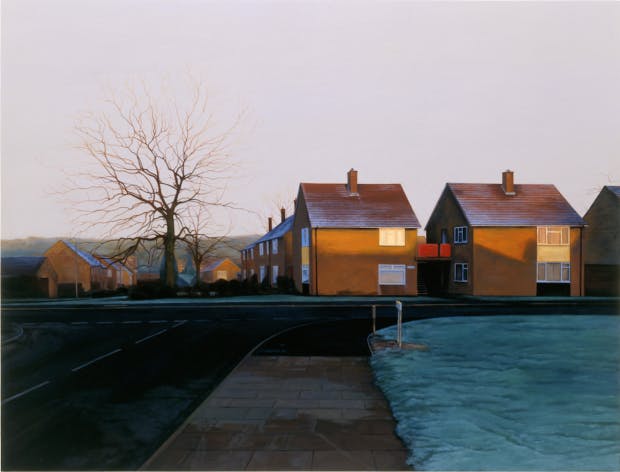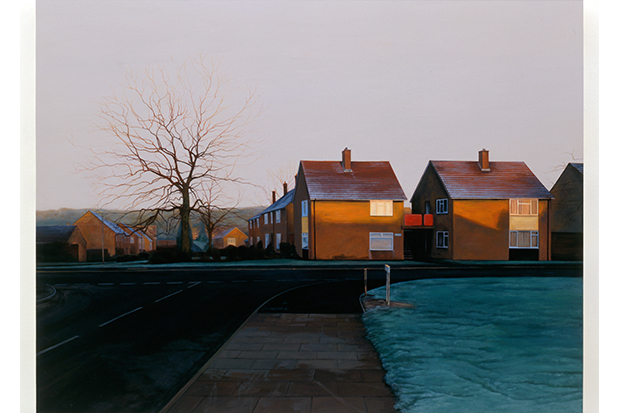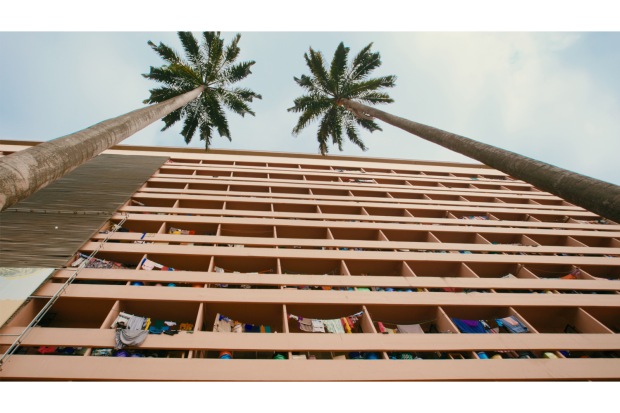Art is aspiring; hungry; acutely aware of what it could become, and of what it could lack; longs for safety and reaches out in speculative attempts to do something new; exists on the outer edges of lives, looking inwards with hopes, some day, to be more essential. Art, literature and music are, in short, suburbs to the grands projets of our lives at their most significant.
Over the next year the Architecture Foundation will present new films, walks, talks and another instalment of the Doughnut Festival, to contemplate the transformation of London’s outer ring. It’s an interesting moment. The capital is not physically expanding, but the relationship between inner and outer is significantly altering and will go on altering. Pretty well the whole of central London is in the process of gentrification, or, worse, of speculative development of areas not meant to be lived in. The impacts have been extraordinary, and not intended. The huge new developments between Chelsea Bridge and Vauxhall Bridge, between MI6 and Battersea Power Station, have largely been sold to absentee investors, and what was derelict is now shiny, but just as empty of people. (Go to the large new Waitrose on Nine Elms Lane on a Saturday, and ask yourself, as you walk the vacant aisles, whether this is really a supermarket surrounded by thousands of new flats in the most crowded city in Europe.)
Where the ageing housing stock in central London holds less appeal for the overseas investor, the wealthy have nevertheless driven out existing communities. The old West Indians who lived in Clapham, Stockwell and Brixton have woken up to the gold mine of a terraced house in SW9, SW4 or even SW2; their children, less concerned with living within their own ethnic group for safety, have dispersed across zones four and five and even the Home Counties; the same is true for the Bengalis who lived around Brick Lane, their prosperous children now ensconced in Wimbledon or Hendon with half an acre of garden. Central London is either being left to the very rich as a playground — have you been to Brixton Market recently? — or turned into investment opportunities for Singaporeans who will never set foot over the threshold of their investment. The suburbs, meanwhile, are doing what they always do; producing creative minds, bursting to escape.
It is easy to think of writers, musicians and artists who have burst out of their suburban origins into a state of wildness and creative fury. Punk and the New Romantics were spearheaded by notoriously suburban icons. John Galliano, brought up in Streatham, Dulwich and Brockley, was always going to be a hero of the fashion world. The legendary punk figure Jordan (née Pamela Rooke) was famous in the 1970s for her daily commute from the suburban south coast to the Kings Road in full battledress. Kate Bush is the epitome of the suburban dreamer — born in Bexleyheath, she wrote songs that are wonderfully redolent of an imagination fed to bursting in a back bedroom, hairbrush for microphone. The loneliness, superficial conformity, safeness and utter boredom of the English suburbs groomed minds who could not wait to run away.
Most obvious are those creative figures who decided, after a long childhood and adolescence, that they had nothing further to say about the suburbs that goaded and nurtured them. The creative figure who turns with pleasure and serious interest to the life of the suburbs is surprisingly rare, and often diminished as an artist by the assumption that he cannot be anything but a comedian. Both Martin Parr’s photographs of suburban pleasures and Mike Leigh’s great films and plays of suffering existence in safety and apparent comfort are often treated as light comedy; in reality, nothing could be more harrowing than some of their visions. It would be interesting, too, to see where posterity finally places Alan Ayckbourn when the initial familiarity of his social settings has subsided, and this patronising reaction is no longer possible.
Novelists have done a little better; the early novels and short stories of William Trevor, such as ‘Angels at the Ritz’ or Elizabeth Alone, are beautifully serious treatments of suburban lives seen from within, not (like Elizabeth Bowen’s occasional stories) from above. J.G. Ballard’s suburban existence was a matter of the utmost wonder to feature and interview writers, who could not quite believe that anyone could choose to live in Shepperton. More to the point, his imagination fully understood the appeal of prosperous living, and its reckless dangers; his characteristic settings are not quite suburban, more often gated communities or isolated, superficial opulence behind glass. He understood, however, what drove his neighbours, and what their manners were.
Novelists have been insisting on this since Dickens at least, and the wonderful idyll Wemmick contrives for himself in Great Expectations. All the same, the pro-suburban Edwardian writers, such as Conan Doyle, Wells and (especially) Chesterton’s magnificently humane vision in The Man Who Was Thursday, a book which regards the earth as a suburb of Heaven, have not succeeded in inspiring their successors to use the setting with the seriousness it deserves. Writers in general are inspired by such small details that we occasionally need the aid of biographers to understand that a grand vision may be inspired by something very ordinary. Stevie Smith’s extraordinary lyrics, just now issued by Penguin in a fine new edition, are grand, ambitious and strange. It is odd to be reminded that a poem like ‘Wan/ Swan/ On the lake/ Like a cake/ Of soap…’ was probably driven by nothing more impressive than the pond at Smith’s local park in Palmers Green.
Suburban existence, on the whole, is regarded from such a distance, or simply repudiated with utter silence, that in many art forms it would represent a very daring piece of adventure for a creative artist. Suburbs have been an important part of our existence, and where much of human life at its most urgent was lived for nearly 200 years. If there is an opera or a ballet of any merit that has a suburban setting, it has not made much of a mark on the repertory. (There are probably more operas set in nunneries than in suburbs.)
And an artist who takes the subject of rus in urbe seriously seems to us as extreme and unique as any experimentalist. The painter George Shaw specialises in richly detailed images of his suburban Coventry childhood, empty of people. They are beautifully exact, and executed in a wonderfully suburban medium, Humbrol enamel paints. To look at them is to conjure up a world of hobbyists and shed specialists, of overlooked virtuosi in underrated media. (In my suburban childhood, I knew ladies who could create landscapes in cloth and stitchwork that would make you weep with envy.) Shaw’s work is the triumph of the suburban imagination, but it’s interesting to note that he has been embraced by the artistic establishment only at the cost of their declaring his work ‘eerie’, ‘sinister’ or possessing a ‘sense of foreboding’. It’s hard to see how this applies to a beautiful painting of a blossoming cherry tree in the garden of a 1970s house, where the pleasure of the painter and of the owner of the tree exactly coincide.
The suburbs are where most of us live some of our lives, where our happinesses as well as our plans for escape are hatched. They remain, however, a subject matter for the imagination that can be accepted only if they are looked down upon, or if they claim an element of satire, of loathing, of flight about to take place.
Got something to add? Join the discussion and comment below.
Get 10 issues for just $10
Subscribe to The Spectator Australia today for the next 10 magazine issues, plus full online access, for just $10.














Comments
Don't miss out
Join the conversation with other Spectator Australia readers. Subscribe to leave a comment.
SUBSCRIBEAlready a subscriber? Log in